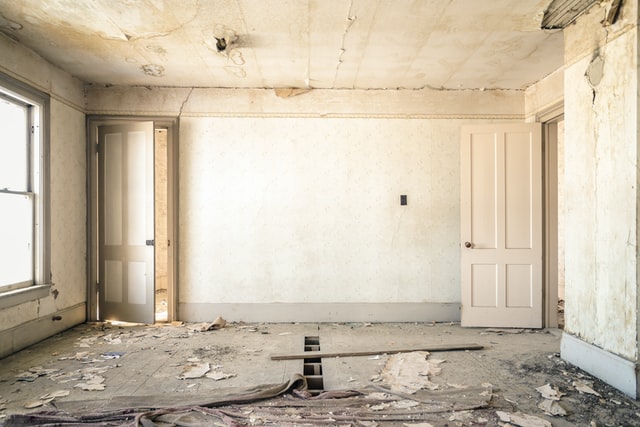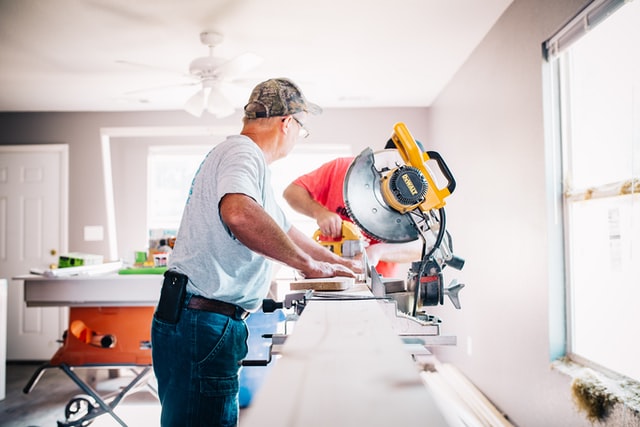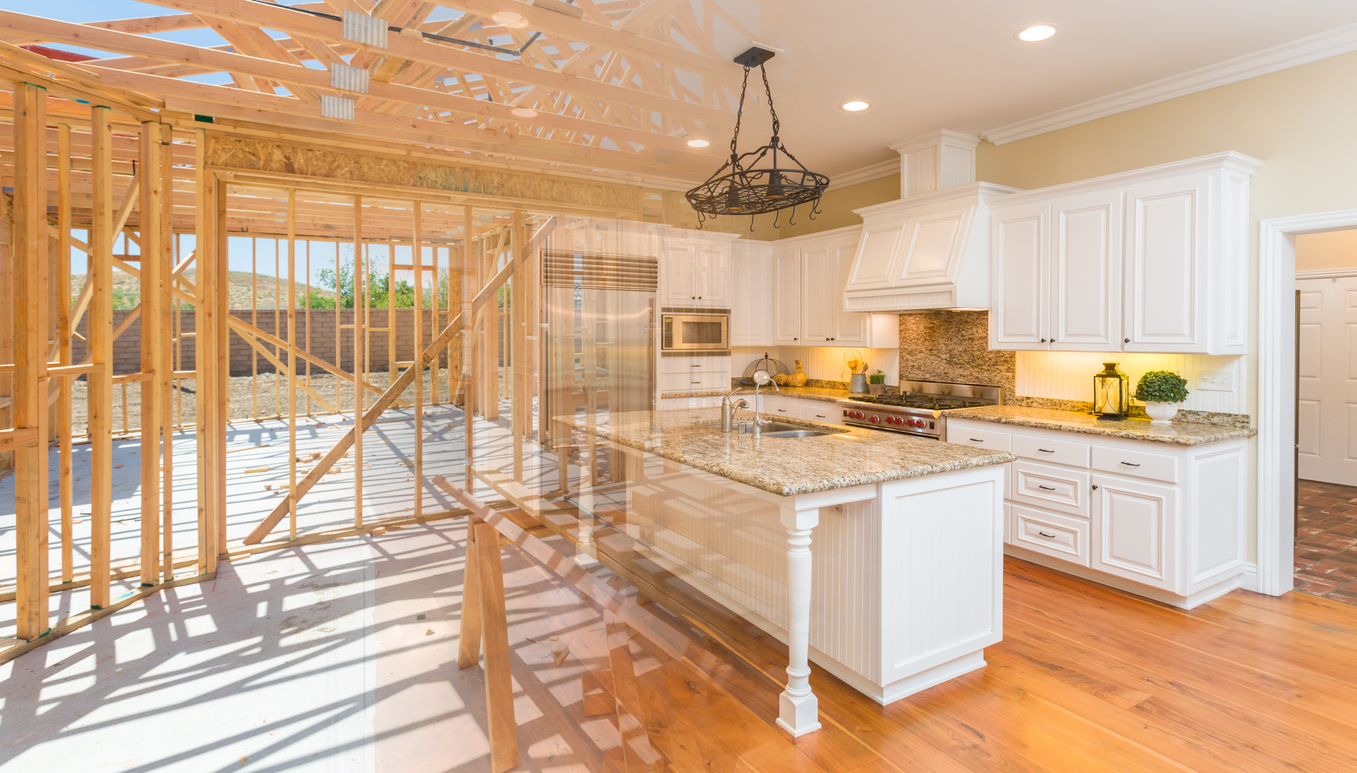A strong house foundation is one of the top 10 signs your home is in excellent condition. You could argue that it’s the most important sign you have made a good investment. For a home foundation to be strong, it needs to be stable and withstand the environmental elements specific to it.
Besides functioning as the bones of a house, a good home foundation insulates against the cold, protects from strong wind forces, and stops water from entering.
But what are we talking about when we talk about the foundation of a house? Terms like “above grade” and “substrate” have multiple definitions. Here is a list and the definitions of a few standard terms:
- Grade – the finished ground level adjoining the building at all exterior walls
- Footing – continuous concrete, crushed stone, and grouted masonry can all be used to .make the wall connecting the exterior walls to the foundation
- Foundation – the base of a home or structure
- Substrate – an underlying substance or layer, can be soil, sand, or rock. It is sometimes used interchangeably with soil.
Foundation Materials, Styles, and Challenges

Most homes use concrete, precast concrete, wood, or masonry to construct the foundation. The footings also use these materials with reinforcements like rebar and steel as dictated by the relevant building codes. The footing and the foundation are susceptible to issues like water damage, sinking substrates, swelling from intense hot and cold temperatures, seismic activity, and sinkholes.
Design and Function of Different Foundations
There are four primary foundations in modern home architecture:
- Crawl space – a narrow, hollow space between the ground and first floor
- Daylight basement – not entirely above nor below grade, with at least one window
- Full basement – an entire floor below grade with a concrete slab and stem footings
- Concrete slab-On-grade – a continuous-pour concrete slab, thicker at the edges for support
Which one is used for the foundation of any home depends on:
- Building Budget – the cost of materials considered over time
- Climate – the likelihood of flooding, hot and cold extremes, tornadoes
- Geographic Location – wetlands, sand, silt, rock, clay, slope
- Environmental Concerns – geothermal, radon, pollutants
Crawlspace
A crawlspace can offer similar benefits as an unfinished basement but at a lower cost. The crawlspace is constructed of footings on a substrate. It is used to house electrical wiring, plumbing, insulation, and heating — accessing the crawlspace for repairs of issues that may otherwise have required excavating. They are well suited to coastal areas where excessive water can damage basement slabs and cause cracks. Consider adding a crawlspace door to increase storage space access
Daylight Basement
A daylight basement has one wall at least partially above grade and one window. It is similar to a walk-out in that it is both below and above grade. A daylight basement does not have an exterior door accessed, but a walk-out basement does. Both are useful when you are constructing your home on a slope.
Full Basement
The full basement is the entire footprint of the house. It will also have enough height to stand at about 7.5 feet fully. The full basement will house the electrical, plumbing, heating, and built-in vacuum systems like the crawlspace and daylight basement.
Concrete Slab-On-Grade
A concrete slab-on-grade is the only foundation of the four listed that does not have any space for storage, air circulation, or services like plumbing or electrical. It is a single pour concrete slab that extends the footprint of the building. It is often thicker where it will meet with exterior and load-bearing walls. Wire mesh and metal rods reinforce the foundation and help prevent cracking.
Other Bases
Pilings and stilts can also be considered foundations. A piling is a support footing driven deeper into the ground until a more robust substrate is found. It is common among marsh, swamp, and waterfront homes where the soil is mostly sand, loam, or clay.
Where blasting out a full basement is not possible, homes built into mountainsides are supported in part by stilts made of large wood or steel beams. Concrete forms are first set into the ground and make up the foundation for the beams.
Common Signs & Symptoms of a Faulty Foundation
Most foundation types share common issues like gaps, cracks, bowing, sinking, and sloping. These problems also share common causes:
- Uneven compaction in the soil below
- Water infiltration from pooling caused by faulty or damaged eaves
- Environmental factors like landslides, earthquakes, and sinkholes
- Swelling and drying caused by intense temperatures and inconsistent moisture
When you uncover issues like this in your home or a home you are thinking about buying, it may be time to call a professional home inspector.
Gaps
Gaps between the foundation and the foundation walls are not uncommon. Some gaps are left intentionally to allow the slab to shift with the changing temperature and natural shifts caused by the settling soil below. Gaps in door frames, windows, ceilings, walls, and floors are all signs that your foundation has settled or shifted.
Cracks
The presence of cracks can also indicate foundation issues and potential failure. Horizontal lines along the exterior and foundation walls indicate a shift in the foundation. Masonry will show signs of foundation issues with step-like cracks along the grout and brick lines.
Gaps and cracks can also allow mold, mildew, and infestations to take hold.
Bowing, Sinking, and Sloping
Bowing, sinking, and sloping of the floor and walls indicate that your foundation has issues. The first signs are usually creaky floors and stairs, doors that don’t open and close properly, and noises that sound like your home is haunted.
Your Inspection Uncovered A Problem, Now What?

When a house shows clear signs of foundation problems, it doesn’t necessarily mean it’s terrible. It really depends on your point of view. A potential buyer with a contingent offer needs to consider their financing terms. A private lender is less concerned, but if you are using a VA, FHA, or USDA loan, they will want to ensure the home’s value will be enough to recoup the loss in a foreclosure. Pushing through with an over-asking offer could jeopardize your financing.
Look On the Bright Side
Uncovering a foundation issue early is better than after it has time to create irreparable damage. A crack in a foundation wall left in disrepair can become a spot where water and mildew infiltrate, causing more significant cracks and holes in the foundation, leading to access points for vermin infestation and subsequent potential health problems associated with rodent and mold issues.
The Brighter Side
You’ve uncovered a problem in the foundation — now you know, and knowing is half the battle. You can now work to prevent further damage while preparing to repair the current damage.
The Downside
You have uncovered a problem in the foundation of a house you want to buy or your home. Despite the positives of discovering it early, it still feels like a disadvantage.
Make It Work For You
A foundation issue may not mean the house is not worth buying but can certainly give you a bargaining chip in negotiating the price of your home. The homeowner may agree to pay for the repairs before closing or reduce the price to the equivalent of the cost of the repairs. Work with your home inspector to get an accurate idea of cost and your real estate lawyer to ensure it is all put in writing.
Repair & Cost Options

After you have had your home inspected by a professional and identified the damage’s scope, you can proceed with repairs. The type of repair and foundation repair cost will depend on the extent of the damage and the underlying cause. In some cases, your inspector may recommend you hire an engineer.
Break it down, Build it up: Cost of Repairs and Disrepair
You can repair simple repairs to cracks along foundation walls resulting from the natural settling of new construction with three-way expanding foam and mortar. The gaps in walls, flooring, and counters can also have simple repairs done. These light repairs can cost $20-$200, provided the whole room doesn’t require new flooring, counters, or tiles.
Pooling and water damage caused by poor eave construction and lack of regular maintenance can be remedied by first dealing with the underlying problem — the eaves. Provided any erosion from the grade is corrected, issues such as this should be easy to prevent with proper regular maintenance. DIY cost should be less than $100, more if you need to repair the grade or replace the eaves. If mold and mildew have infiltrated areas, you must appropriately eradicate them before making repairs to ensure they don’t creep back in.
In cases where the underlying issue is more severe, you will need to seek out the help of a professional. Problems that have caused the slab or footings to sink need to have a pile-driven through the unstable soil until it reaches solid ground. They will then raise the foundation until it is level again. Hiring a professional is strongly recommended. They will know about required permits and if you have to have your neighbors’ property assessed for seismic instability before you start drilling, lest you cause damage to their home. Repairs like this can cost $20,000 to $75,000.
Old VS New: Who Has The Better Foundation
There are benefits to owning a home that has stood the creaks and squeaks of settling in. Some say nothing better than an old house with a life of its own. Many will say newer always equals better. We leave it to you.
Older Foundations
There are many benefits to having an older home and an older foundation. It is uncommon for the foundation of a home to settle past three years, let alone 60 to 100 years later. It has withstood wars, and it can handle what your family throws at it. If your home shows recent signs of damage to the foundation, the culprit may be environmental changes.
Changes in the local watershed — things like new construction can divert the water table causing new water issues where there were none for decades. This interactive watershed map can help you identify if, how, and where water may be flowing underground in your area. If you do uncover a new water issue caused by recent construction, there may be recourse from the builder for the damage their construction caused.
Earthquakes are commonly thought to be confined to the Pacific Rim. Earthquakes have become more common in many parts of the US. Oil-rich interior states like Oklahoma have seen a substantial increase in seismic activity. In this case, a seismic upgrade may be required. Recourse may be available here as well.
In any case, it is a good idea to seek the advice of a professional home inspector who will be able to tell you the extent, likely causes, and cost associated with the damage.
Newer Foundations 200
Newer foundations are built with modern standards. Technologies in construction continue to advance year over year. Where a concrete slab would have failed from freezing temperatures in the past, a modern slab constructed of concrete with additives will allow for the foundation to freeze and thaw without causing problems. As some resources like wood and steel become scarce, engineers and builders are forced to get innovative and creative. These advances bring great reward to the new home buyer, especially if the home is under warranty from the builder.
Insuring a new home is considered to be easier than an old home. Some insurance companies wouldn’t insure a house over 100 years old because it is more likely to have all the problems we have discussed here and more if the homeowner didn’t adequately maintain it throughout its lifetime. Proper maintenance is key to the life of any home and should never be overlooked. The costs can be devastating.

If you are considering a new home purchase or have recently uncovered foundation problems in your home, there are options for you to explore. In many cases, it doesn’t mean all is lost. The problem may be as simple as filling a crack or cleaning out your eaves more frequently. It could also mean having the whole property excavated and the drainage repaired before you even begin to repair the foundation. Having a home warranty can cover the cost of repairs, but knowing the full scope of the problem can only be determined through the help of a professional home inspector.




